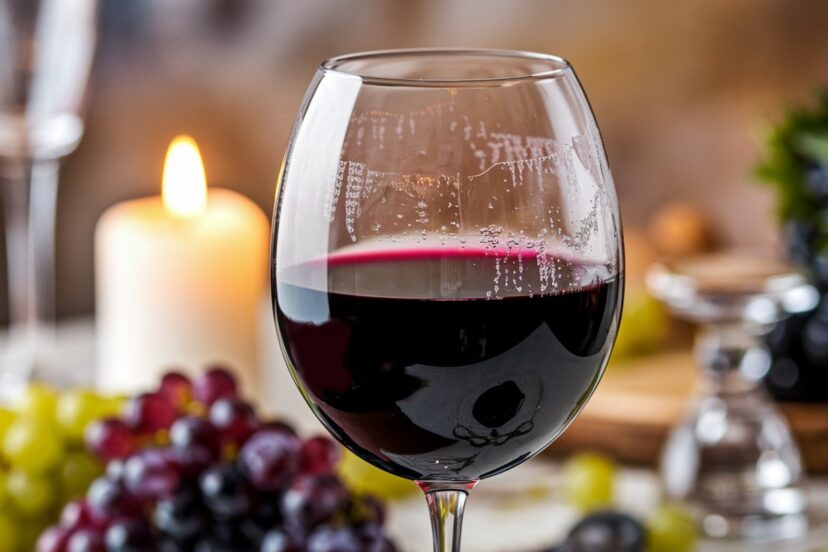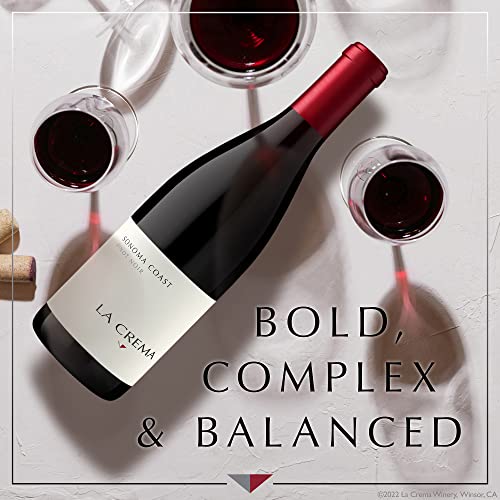Best Pinot Noir Wine
Post Disclaimer
*We may earn a commission for purchases made using our links. Please see our disclosure to learn more.
Pinot Noir stands as one of the world’s most celebrated and enigmatic wine varieties, known for producing some of the best Pinot Noir wine. This elegant red wine, with its delicate complexity and remarkable versatility, traces its roots back to Burgundy, France, where it has long been revered for its ability to express the unique character of its terroir. Today, Pinot Noir thrives in diverse regions worldwide, from Oregon’s misty Willamette Valley to California’s sun-kissed Russian River Valley and New Zealand’s dramatic Central Otago. These regions allow the grape to develop its characteristic balance of fruit, acidity, and earthiness, showcasing the global allure of this noble variety.
For wine enthusiasts, whether newcomers or seasoned connoisseurs, Pinot Noir offers the perfect blend of accessibility and sophistication. Its versatility makes it ideal for pairing with a wide range of dishes, from light seafood to rich meats. The ongoing evolution of Pinot Noir wines in various regions around the world ensures its place as a perennial favorite, offering an unparalleled journey through its diverse expressions and solidifying its reputation as one of the best Pinot Noir wines available.
Key Takeaways
- Pinot Noir is a light to medium-bodied red wine celebrated for its bright acidity and soft tannins
- The finest examples showcase a harmonious balance of red fruits, earthy undertones and subtle spice notes
- Premium growing regions include Burgundy, Oregon, California and New Zealand, each imparting distinct characteristics
- Optimal serving temperature ranges between 55-65°F (13-18°C) to preserve its delicate aromas
- Demonstrates exceptional food pairing versatility, particularly with poultry, mushroom dishes, and grilled salmon
- Investment potential varies significantly, with some bottles appreciating considerably in value over time
Top Recommended Pinot Noirs
1. La Crema Sonoma Coast Pinot Noir
- Balanced acidity and fine tannins enhance the long finish.
- Aged in 98% French oak, adding complexity and depth.
- Highly rated with 91 points from Robert Parker Wine Advocate.
- Price may be higher compared to other Pinot Noirs.
- Vintage variations could affect flavor consistency.
- Limited availability may make it harder to find.
- Region: Sonoma Coast, California
- Tasting Notes: Vibrant red cherry and ripe plum layered with subtle baking spices and vanilla
- Production Method: Hand-harvested, cold-soaked for enhanced flavor extraction
- Aging: 9 months in French oak barrels (20% new)
- Price Range: $22-25
- Perfect For: Special occasions and dinner parties
- Food Pairings: Herb-roasted chicken, mushroom risotto, grilled salmon
- Awards: 90 points Wine Enthusiast (2022 vintage)
2. Willamette Valley Vineyards Whole Cluster Pinot Noir
- Cool-climate growing enhances complexity and acidity.
- Affordable price for high-quality Oregon Pinot Noir.
- Versatile pairing with various meats like grilled salmon and roast pork.
- Alcohol content (12.5%) may feel lower for some wine enthusiasts.
- Flavors may not appeal to those seeking a fruit-forward Pinot Noir.
- Vintage variations could influence flavor profile.
- Region: Willamette Valley, Oregon
- Tasting Notes: Fresh raspberries and cherry cola complemented by earthy undertones and subtle florals
- Production Method: Whole cluster fermentation for enhanced aromatics
- Aging: 8 months in French oak
- Price Range: $24-28
- Perfect For: Exploring Oregon’s signature style
- Food Pairings: Roasted duck breast, wild mushroom pasta, aged Gruyère
- Sustainability: LIVE certified sustainable
3. Meiomi Pinot Noir
MEIOMI Pinot Noir offers a rich, smooth profile with layers of blackberry, blueberry, cherry, and raspberry flavors, creating a balanced and approachable wine. Aged for six months in 100% French oak, it gains added complexity and a silky texture, making it easy to enjoy with a variety of meals. This versatile wine pairs exceptionally well with dishes like tomato-based pasta, thin-crust pizza, grilled lamb, and turkey, making it an ideal choice for casual meals and celebrations alike. With its consistent flavor profile and smooth tannins, MEIOMI Pinot Noir is a crowd-pleaser for any occasion.
- Rich, deeply flavored with a smooth, silky texture.
- Aged in 100% French oak for added complexity and richness.
- Versatile pairing with various dishes, such as pizza, pasta, and grilled meats.
- Higher alcohol content (13.7%) may not appeal to all drinkers.
- Some may find the flavor profile less complex compared to premium Pinot Noirs.
- Slightly higher price point than other Pinot Noir options.
- Region: California (Coastal blend)
- Tasting Notes: Jammy dark fruit, vanilla, and mocha with a touch of toasted oak
- Production Method: Blend of premium coastal vineyard fruits
- Aging: 6 months in French oak
- Price Range: $19-23
- Perfect For: Casual gatherings and everyday enjoyment
- Food Pairings: BBQ chicken, pasta with meat sauce, mild cheeses
- Notable: Multi-regional blend highlighting California’s diverse terroirs
4. Erath Oregon Pinot Noir
- Earthy flavors of black cherry, raspberry, mint, and truffle create a complex profile.
- Medium-bodied with a smooth, balanced taste, thanks to subtle oak influence.
- Versatile pairing options with a variety of dishes, including roast meat and pasta.
- Alcohol content (13.5%) may not appeal to those seeking a lighter wine.
- Vintage variations could affect the consistency of flavor.
- Some may prefer a bolder Pinot Noir compared to its medium-bodied style.
- Region: Oregon
- Tasting Notes: Bright red fruits, fresh herbs, and subtle oak integration
- Production Method: Traditional fermentation with select vineyard lots
- Aging: 9 months in French oak (15% new)
- Price Range: $18-22
- Perfect For: Introduction to Oregon Pinot Noir
- Food Pairings: Roasted turkey, grilled vegetables, Pacific Northwest salmon
- History: Pioneer producer in Oregon’s wine industry
Understanding Pinot Noir
Historical Context
Pinot Noir’s rich history dates back to the monasteries of medieval Burgundy, where Cistercian monks meticulously mapped and cultivated the finest vineyards in the region. These early vignerons, dedicated to perfecting their craft, quickly recognized Pinot Noir’s unique ability to express the subtle differences in terrain, establishing the foundation for today’s concept of terroir. The monks’ work laid the groundwork for the winemaking techniques and vineyard management practices that are still employed today.
The heritage of these early wine producers continues to influence modern winemaking, shaping our understanding of how the right conditions can elevate a wine to world-class quality. This legacy also helped form the basis for the high regard in which Pinot Noir is held, with Burgundy still being its most famous and revered growing region.
Viticulture and Challenges
Growing Pinot Noir is no simple task, and the grape’s unique characteristics present several challenges that contribute to its mystique, and often its higher price point. The thin skin of the grape makes it highly vulnerable to diseases, pests, and adverse weather conditions, which requires careful vineyard management and attention to detail. Climate plays a crucial role in Pinot Noir’s success, as it thrives in cooler climates with moderate sunshine, which helps preserve the grape’s delicate acidity and fruit character.
Ideal growing conditions also include well-draining soils, preferably a mix of limestone and clay-limestone, which contribute to the depth and minerality of the wine. Vineyard management practices such as careful canopy management are essential to prevent disease and to ensure that the grapes ripen at the optimal time. Protecting the vines from strong winds and extreme weather events also remains critical. With these specific requirements, the timing of harvest is especially important to achieve the perfect balance of ripeness, ensuring the best possible expression of Pinot Noir’s flavor.
Character and Style
Pinot Noir is celebrated for its transparency, both in its lighter color and its ability to express terroir. The wine typically displays a lighter ruby hue compared to other red varieties, with a complexity that belies its apparent delicacy. Premium examples offer:
- Aromas: Red cherries, raspberries, strawberries, mushrooms, forest floor, and subtle spices
- Texture: Silky tannins with medium to high acidity
- Structure: Light to medium-bodied with elegant balance
- Finish: Long and complex, often with evolving flavor profiles
- Aging potential: Varies significantly, with top examples improving for decades
Regional Variations
Burgundy (France)
Burgundy remains the spiritual home of Pinot Noir and continues to set the global benchmark for the variety. The region’s distinctive minerality, derived from its limestone-rich soils, imparts a unique character to its wines that is sought after by connoisseurs worldwide. As Pinot Noir ages in Burgundy, it develops complex tertiary aromas, including earthy, leathery, and smoky notes, which elevate the wine’s depth and appeal.
Burgundy’s hierarchical classification system, Grand Cru, Premier Cru, and Village, further refines the understanding of terroir, with wines from Grand Cru vineyards like Romanée-Conti being among the most revered and expensive in the world. Notable sub-regions within Burgundy, such as Gevrey-Chambertin, Vosne-Romanée, and Chambolle-Musigny, each offer unique expressions of Pinot Noir, showcasing variations in climate, soil, and winemaking traditions.
Oregon (United States)
Oregon, particularly the Willamette Valley, has become one of the United States’ most celebrated Pinot Noir regions, often bridging the styles of Old and New World winemaking. The cool climate of Oregon allows Pinot Noir to retain its bright acidity, a hallmark of quality, while also highlighting prominent red fruit flavors such as raspberry and cherry. Many Oregon Pinot Noirs also exhibit earthy undertones similar to their Burgundian counterparts, which reflect the region’s diverse soils and climate.
Over the past several decades, there has been a growing focus on sustainable and biodynamic practices in Oregon, which are increasingly influencing the region’s reputation for producing high-quality wines. The Willamette Valley AVA, along with its sub-appellations, including Yamhill-Carlton and Dundee Hills, continue to gain recognition for their exceptional Pinot Noir production.
California (United States)
California’s diverse climate zones offer a wide range of expressions of Pinot Noir, from riper, more full-bodied styles with higher alcohol content to more restrained examples. The warmer growing regions, such as Sonoma Coast and Russian River Valley, are known for producing wines with pronounced fruit flavors, think black cherry, plum, and raspberry, as well as a noticeable oak influence that imparts a toasty, vanilla-like richness.
In contrast, cooler coastal regions like Santa Barbara produce Pinot Noir with more subtlety, higher acidity, and brighter fruit character. Innovation in winemaking techniques, including the use of various clones of Pinot Noir and experimentation with fermentation methods, continues to push the boundaries of what California Pinot Noir can offer. As a result, the state has become a powerhouse for crafting diverse and bold expressions of this iconic grape.
New Zealand
Emerging as a world-class Pinot Noir producer, New Zealand has rapidly gained recognition for its vibrant and pure expressions of the variety. The country’s diverse climate and geography allow for significant regional distinctions, particularly between wines from the North and South Islands. Central Otago, located on the South Island, is widely regarded as one of the premier Pinot Noir regions, with its cooler climate and unique soil composition contributing to wines that are intense in flavor, yet balanced and refined.
Other regions, like Marlborough and Hawke’s Bay, also produce high-quality Pinot Noir, with their own expressions of fruit purity and subtle earthiness. New Zealand’s commitment to sustainable viticulture has further enhanced its reputation, making it a respected producer of premium Pinot Noir wines.
Food Pairing Mastery
Pinot Noir’s versatility makes it an exceptional wine for pairing with a broad range of dishes, thanks to its bright acidity, moderate tannins, and diverse flavor profile. The wine’s subtlety and balanced nature make it particularly well-suited for both classic and contemporary food pairings.
Classic Pairings
- Roasted chicken or turkey with herbs: The wine’s acidity and fruit profile complement the savory flavors of roasted poultry.
- Duck breast with cherry sauce: Pinot Noir’s red fruit flavors, particularly cherry, pair perfectly with the richness of duck.
- Mushroom-based dishes (risotto, soup, tarts): Earthy, umami-rich dishes are elevated by Pinot Noir’s subtle earthiness and smooth texture.
- Grilled salmon or tuna: The bright acidity and delicate fruit of Pinot Noir enhance the flavors of grilled or seared fish.
- Soft and medium-aged cheeses: Wines with balanced acidity, like Pinot Noir, pair beautifully with cheeses such as Brie, Camembert, and Gruyère.
Contemporary Matches
- Asian-inspired dishes with mild spices: The lightness and acidity of Pinot Noir complement the delicate spices found in dishes like teriyaki chicken, sushi, or even Thai curries.
- Plant-based meat alternatives: With the rise of plant-based diets, Pinot Noir pairs excellently with dishes like mushroom burgers or veggie stir-fries.
- Roasted root vegetables: The earthy flavors of roasted vegetables, such as carrots, beets, and sweet potatoes, harmonize with Pinot Noir’s earthy undertones.
- Charcuterie boards: The bright fruit flavors and moderate tannins of Pinot Noir make it an excellent choice for pairing with cured meats, pâtés, and cheeses.
- Modern fusion cuisine: Pinot Noir’s adaptability shines in modern fusion dishes, where its nuanced complexity can complement a wide variety of flavors, from spicy to savory.
Storage and Service
Optimal Storage Conditions
- Temperature: Store Pinot Noir at a consistent 55°F (13°C). Temperature fluctuations can negatively affect the aging process and cause premature aging or spoilage. A stable, cool environment ensures the wine matures properly.
- Humidity: Maintain humidity levels between 70-75% to keep the cork moist and prevent oxidation. If humidity is too low, the cork can dry out, allowing air to enter. Excessive humidity can lead to mold on the cork and label.
- Position: Store bottles horizontally to keep the cork in contact with the wine. This prevents the cork from drying out, maintaining a proper seal and preventing oxygen from entering the bottle.
- Light Exposure: Avoid exposing Pinot Noir to direct light, especially UV rays, which can cause off flavors. Store bottles in a dark environment to protect the wine from light damage.
- Vibration: Keep the wine undisturbed in a stable environment. Excessive vibration can interfere with the aging process and disturb the wine’s delicate balance.
- Aging Potential: High-quality Pinot Noir, especially from regions like Burgundy, can improve over 5-15 years. With aging, its flavors become more complex, evolving from fruity to earthy and savory notes.
Serving Recommendations
- Temperature: Serve Pinot Noir between 55-65°F (13-18°C). Serving too warm or too cold can distort the wine’s flavors and aromas.
- Glassware: Use a Burgundy-style glass with a wide bowl to allow the wine to breathe and release its complex aromas.
- Breathing Time: Allow young wines to breathe for 15-30 minutes before serving to open up their flavors. Older wines need minimal exposure.
- Decanting: Decanting is generally unnecessary except for older vintages that may have sediment. It allows the wine to breathe and separate from any sediment.
- Portion Size: Serve Pinot Noir in 5-6 oz (150-180ml) portions, allowing space for the wine to swirl and express its aromas.
Investment Considerations
Pinot Noir can be a lucrative investment for collectors:
- Premium Burgundies: Wines from Burgundy, especially those from top producers, consistently appreciate in value.
- Emerging Regions: Regions like Oregon, California, and New Zealand offer Pinot Noir wines at lower prices with potential for future value growth.
- Limited Production: The scarcity of Pinot Noir from top producers makes it desirable and valuable over time.
- Secondary Market: There’s a strong secondary market for acclaimed Pinot Noir producers. Proper storage and provenance can drive up wine value on the resale market.
Conclusion
Pinot Noir remains one of the wine world’s most captivating varieties, offering an alluring combination of elegance, complexity, and versatility. Known as the best Pinot Noir wine, it showcases the perfect balance of expressing terroir while maintaining its essential character, making it a fascinating study in the interaction between nature and winemaking artistry.
Whether you’re a newcomer exploring the recommendations above or a seasoned enthusiast delving into premium Burgundies, Pinot Noir offers endless opportunities for discovery and appreciation. Remember that personal taste preferences should guide your choices, and don’t hesitate to explore different regions and producers to find your perfect expression of this noble grape.
Frequently Asked Questions
Q: How long can I store an opened bottle of Pinot Noir?
A: An opened bottle of Pinot Noir typically maintains its best qualities for 3-5 days when properly re-corked and stored in the refrigerator. For optimal preservation, use a wine preservation system that removes air from the bottle. Always allow the wine to warm slightly before serving it from the refrigerator to fully enjoy the best Pinot Noir wine experience.
Q: Why is Pinot Noir often more expensive than other red wines?
A: Pinot Noir’s higher price point reflects several factors: its notoriously difficult cultivation requiring specific climate conditions and careful handling. The grape’s thin skin makes it susceptible to disease and damage. Lower yields compared to other varieties, and intensive labor requirements throughout the growing season. Additionally, premium examples often undergo meticulous winemaking processes that add to production costs.
Q: What makes Burgundian Pinot Noir special?
A: Burgundy’s unique combination of climate, soil (particularly the limestone-rich earth), and centuries-old winemaking traditions create wines with exceptional complexity, finesse, and aging potential. The region’s strict classification system, detailed understanding of individual vineyard plots (climats), and generational expertise contribute to producing some of the world’s most sought-after wines.
Q: Should I decant Pinot Noir?
A: Most young Pinot Noirs don’t require lengthy decanting. However, allowing the wine to breathe for 15-30 minutes can help open up its aromas and flavors. Older vintages (15+ years) might benefit from careful decanting to separate sediment, but this should be done gently to preserve the wine’s delicate aromatics.
Q: What’s the difference between Old World and New World Pinot Noir?
A: Old World Pinot Noir (primarily from Burgundy) typically shows more earth, mineral, and subtle fruit characteristics, with lower alcohol content and higher acidity. New World versions (from places like California and New Zealand) often display more pronounced fruit flavors, higher alcohol content, and more noticeable oak influence. However, these distinctions are becoming less pronounced as winemaking techniques evolve globally.















